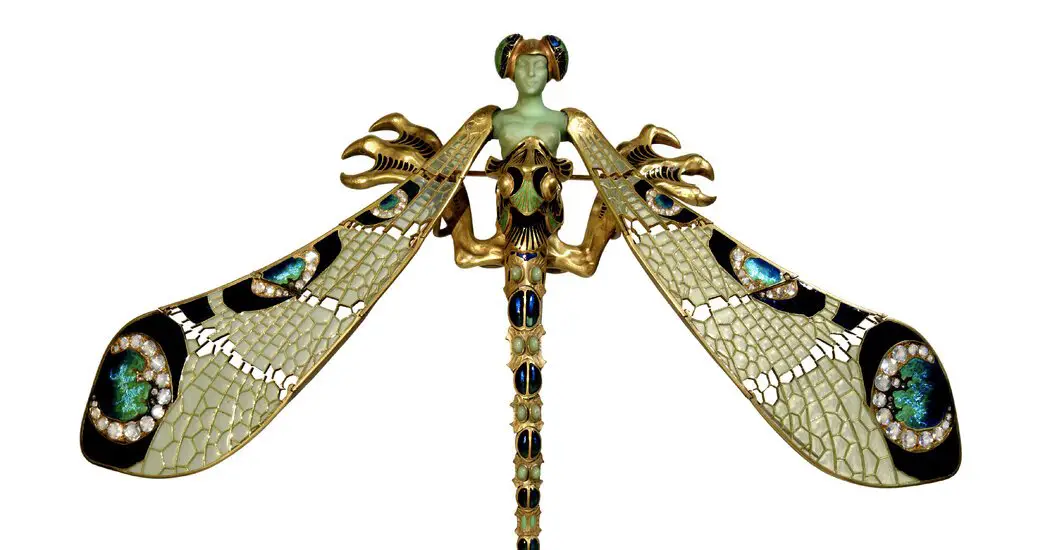Throughout his career, “Lalique was revolutionary,” Ms. Sampaio said. When it comes to his jewelry, she said, “he doesn’t use many precious stones, normally just small diamonds as details.” He often used enamel to add color and “to make the jewel shine,” she said.
In glass as well as jewels, he worked in three main subjects, she said: the woman, the flora and the fauna. Pieces such as an enameled gold peacock, rock crystal cats and even insects, including scarabs and grasshoppers, can be found in this collection. One necklace depicted a string of grasshoppers in horn, tin plate and baroque pearls.
The collection’s largest jewel has a woman as a dragonfly, an ornament designed to be worn on the chest. At more than nine inches long with an articulated-wing span more than 10 inches wide, it features gold, enamel, chrysoprase, chalcedony, moonstones and diamonds. Mr. Gulbenkian paid 6,000 francs for it in 1903.
Another piece, a cockerel diadem, features gold mesh, blue and green enamel, a three-prong comb made from horn, and an amethyst in the chicken’s mouth. It was bought by the collector in 1904 for 2,800 francs.
In terms of today’s worth, Ms. Sampaio wrote in an email that the estimated values for insurance purposes were confidential, but that “the market would pay more than a million euros for some of the artworks.”

